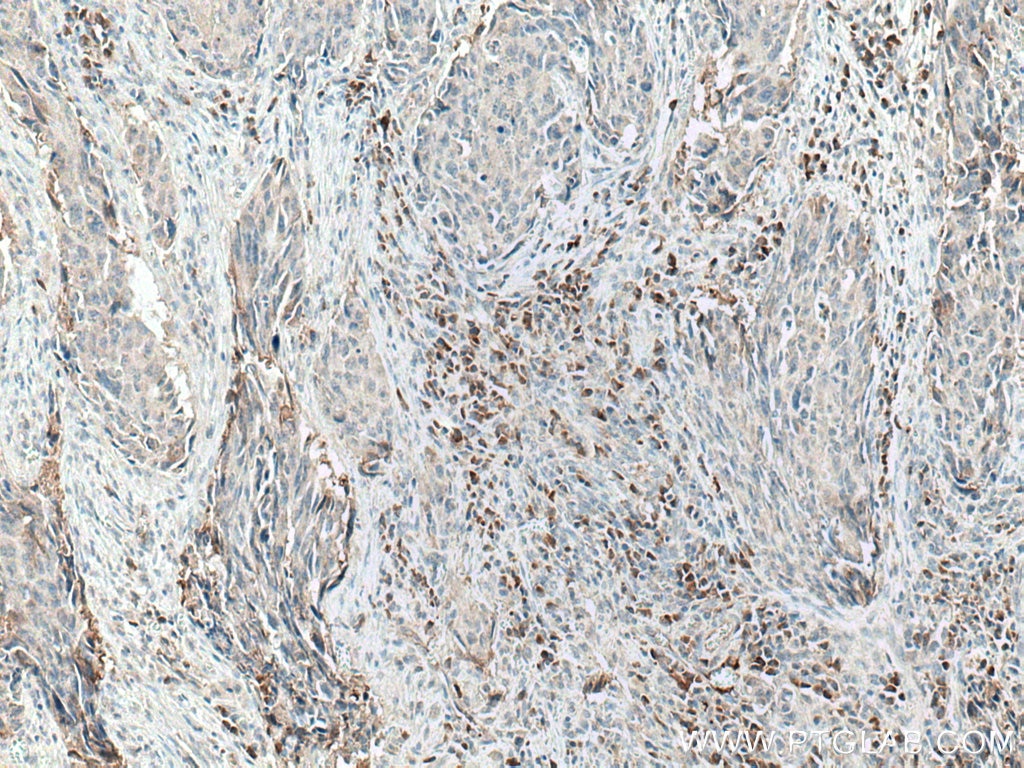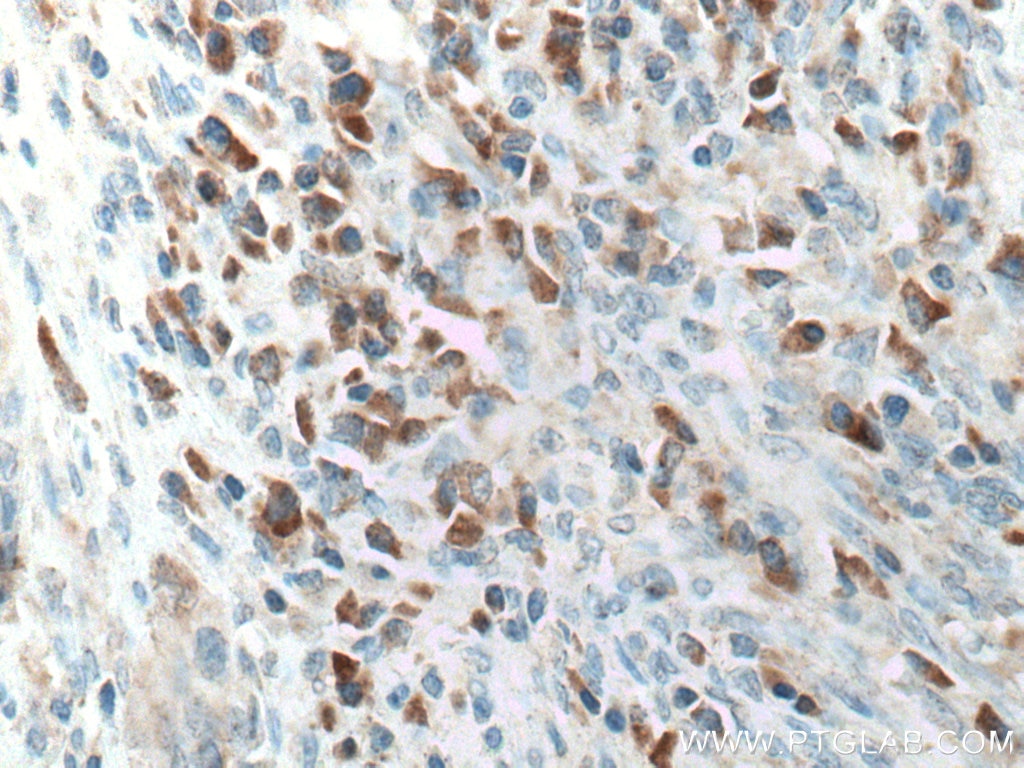Anticorps Polyclonal de lapin anti-CXCL11
CXCL11 Polyclonal Antibody for WB, IHC, ELISA
Hôte / Isotype
Lapin / IgG
Réactivité testée
Humain
Applications
WB, IHC, IF, ELISA
Conjugaison
Non conjugué
N° de cat : 10707-1-AP
Synonymes
Galerie de données de validation
Applications testées
| Résultats positifs en WB | IFN gamma, LPS and Brefeldin A treated THP-1 cells, |
| Résultats positifs en IHC | tissu de cancer du côlon humain, il est suggéré de démasquer l'antigène avec un tampon de TE buffer pH 9.0; (*) À défaut, 'le démasquage de l'antigène peut être 'effectué avec un tampon citrate pH 6,0. |
Dilution recommandée
| Application | Dilution |
|---|---|
| Western Blot (WB) | WB : 1:500-1:1000 |
| Immunohistochimie (IHC) | IHC : 1:50-1:500 |
| It is recommended that this reagent should be titrated in each testing system to obtain optimal results. | |
| Sample-dependent, check data in validation data gallery | |
Applications publiées
| WB | See 1 publications below |
| IHC | See 2 publications below |
| IF | See 1 publications below |
Informations sur le produit
10707-1-AP cible CXCL11 dans les applications de WB, IHC, IF, ELISA et montre une réactivité avec des échantillons Humain
| Réactivité | Humain |
| Réactivité citée | Humain |
| Hôte / Isotype | Lapin / IgG |
| Clonalité | Polyclonal |
| Type | Anticorps |
| Immunogène | CXCL11 Protéine recombinante Ag1087 |
| Nom complet | chemokine (C-X-C motif) ligand 11 |
| Masse moléculaire calculée | 10 kDa |
| Poids moléculaire observé | 10 kDa |
| Numéro d’acquisition GenBank | BC005292 |
| Symbole du gène | CXCL11 |
| Identification du gène (NCBI) | 6373 |
| Conjugaison | Non conjugué |
| Forme | Liquide |
| Méthode de purification | Purification par affinité contre l'antigène |
| Tampon de stockage | PBS with 0.02% sodium azide and 50% glycerol |
| Conditions de stockage | Stocker à -20°C. Stable pendant un an après l'expédition. L'aliquotage n'est pas nécessaire pour le stockage à -20oC Les 20ul contiennent 0,1% de BSA. |
Informations générales
CXCL11, also known as IFN-inducible T-cell α-chemoattractant (I-TAC), is a member of the ELR-negative CXC chemokine family. It is produced by various cells including leukocytes, fibroblasts, and endothelial cells upon stimulation with interferons (IFNs). CXCL11 signals through the chemokine receptors CXCR3 and CXCR7 . This chemokine is associated with multiple functions such as chemotactic migration, regulation of cell proliferation and self-renewal, increasing cell adhesion, and modulation of angiostatic effects.
Protocole
| Product Specific Protocols | |
|---|---|
| WB protocol for CXCL11 antibody 10707-1-AP | Download protocol |
| IHC protocol for CXCL11 antibody 10707-1-AP | Download protocol |
| Standard Protocols | |
|---|---|
| Click here to view our Standard Protocols |
Publications
| Species | Application | Title |
|---|---|---|
Brain Res Bull Silent information regulator 1 ameliorates oxidative stress injury via PGC-1α/PPARγ-Nrf2 pathway after ischemic stroke in rat. | ||
Biomedicines Identification and Preliminary Clinical Validation of Key Extracellular Proteins as the Potential Biomarkers in Hashimoto's Thyroiditis by Comprehensive Analysis | ||
Cancer Immunol Immunother Comprehensive analysis of the relationship between ubiquitin-specific protease 21 (USP21) and prognosis, tumor microenvironment infiltration, and therapy response in colorectal cancer | ||
Signal Transduct Target Ther Ultra-high dose rate radiotherapy overcomes radioresistance in head and neck squamous cell carcinoma | ||
Arthritis Res Ther Integrated analysis of dermatomyositis reveals heterogeneous immune infiltration and interstitial lung disease-associated endotype |




